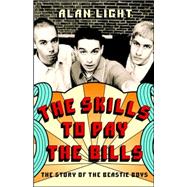
| Acknowledgments | p. 11 |
| Introduction | p. 15 |
| Posse in Effect | p. 33 |
| Young and Useless: 1981-82 | p. 41 |
| Why Not a Beastie Revolution?: 1983-84 | p. 51 |
| She's Crafty, and She's Just My Type: The Madonna Tour, 1985 | p. 63 |
| Get It Together: 1985-86 | p. 73 |
| Always on Vacation: 1986 | p. 81 |
| Most Illin'est B-Boys: 1987 | p. 91 |
| Something's Got to Give: 1988 | p. 99 |
| Like Ma Bell, We Got the III Communication: 1988-89 | p. 109 |
| Back from the Dead: 1989 | p. 117 |
| Droppin' Science Like Galileo Dropped the Orange: 1989-90 | p. 125 |
| Adamant About Livin' Large: Los Angeles | p. 135 |
| New Day Dawning: 1991-92 | p. 141 |
| I Got More Rhymes Than I Got Gray Hairs: 1993-95 | p. 151 |
| Intergalactic Planetary, Planetary Intergalactic: Building an Empire | p. 157 |
| Time You Brought the Grimy Beats Out the Dungeon: 1996-1998 | p. 167 |
| Rhyme the Rhyme Well: 1999-2005 | p. 173 |
| Pass the Mic: Reflections on Three MC's Who Are on the Go | p. 185 |
| Time for Livin': Beastie Boys Today | p. 193 |
| Beastieography | p. 199 |
| Table of Contents provided by Ingram. All Rights Reserved. |
The New copy of this book will include any supplemental materials advertised. Please check the title of the book to determine if it should include any access cards, study guides, lab manuals, CDs, etc.
The Used, Rental and eBook copies of this book are not guaranteed to include any supplemental materials. Typically, only the book itself is included. This is true even if the title states it includes any access cards, study guides, lab manuals, CDs, etc.
Excerpted from The Skills to Pay the Bills: The Story of the Beastie Boys by Alan Light
All rights reserved by the original copyright owners. Excerpts are provided for display purposes only and may not be reproduced, reprinted or distributed without the written permission of the publisher.